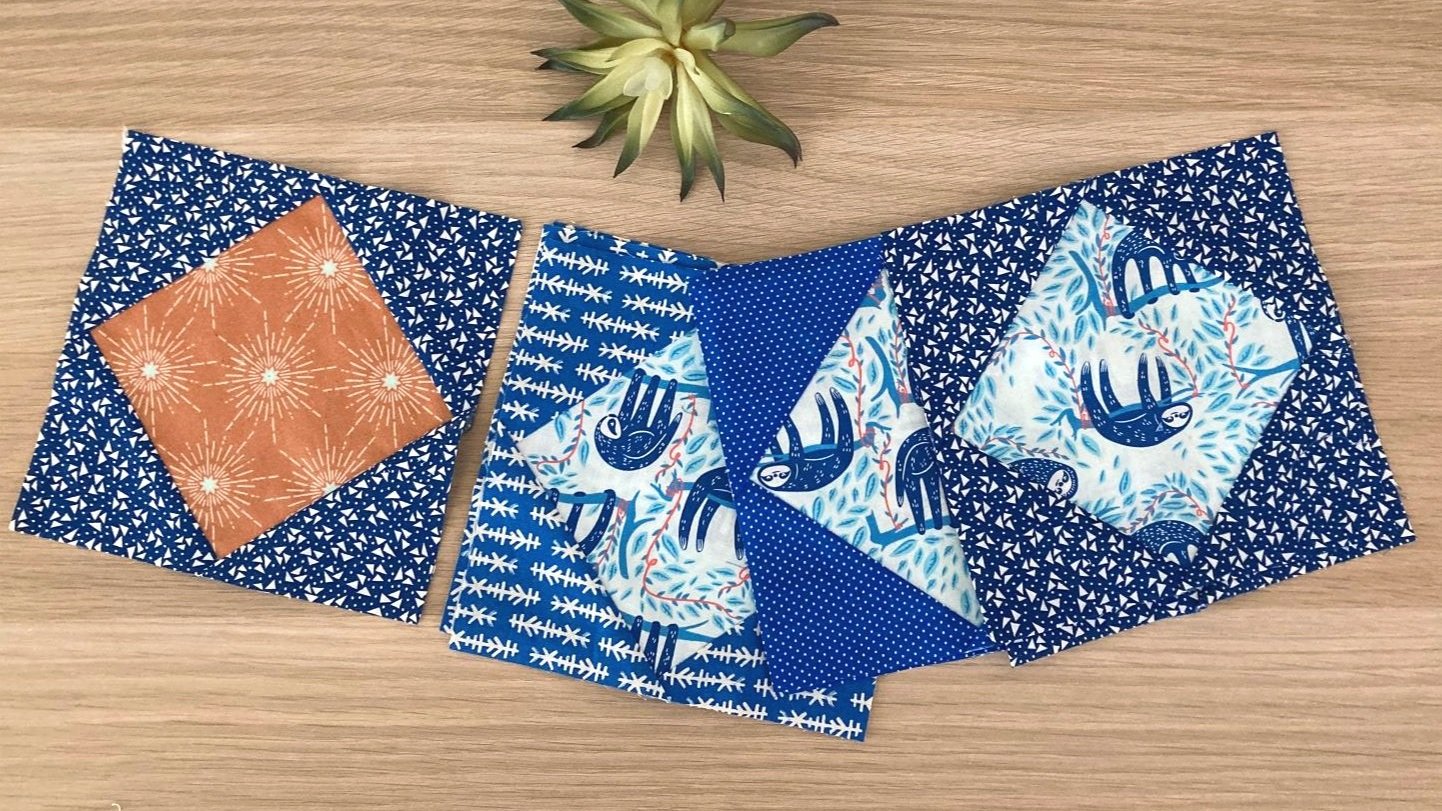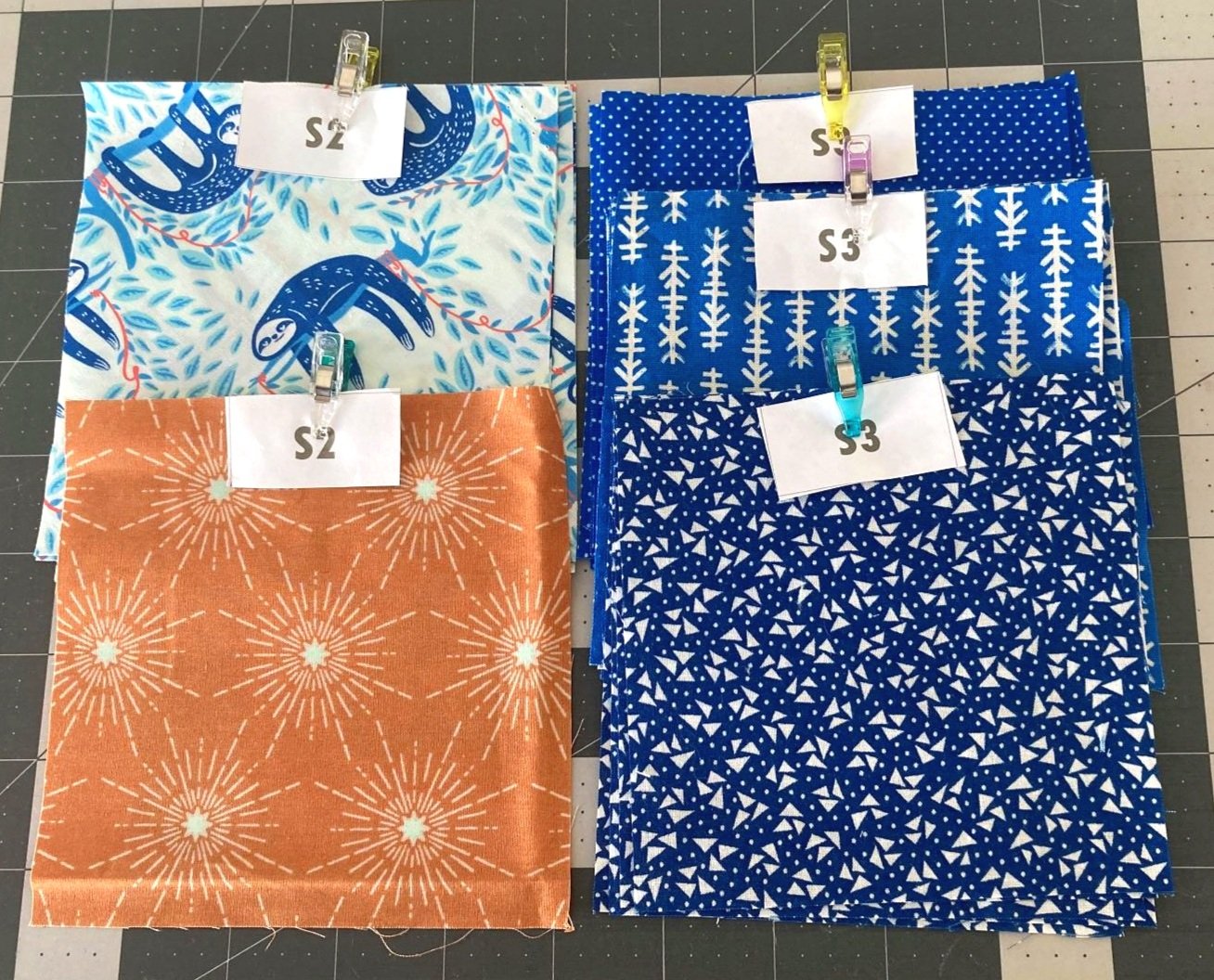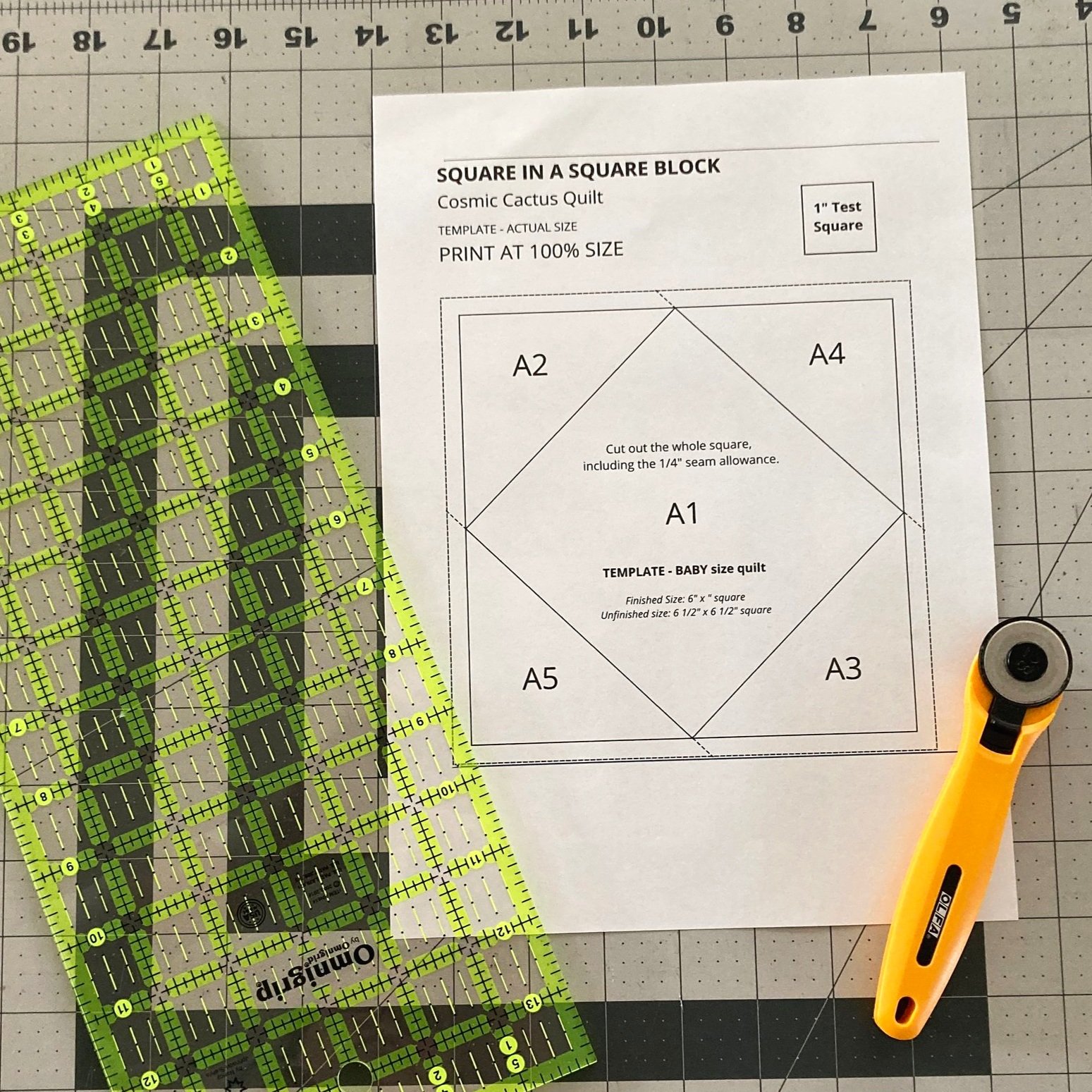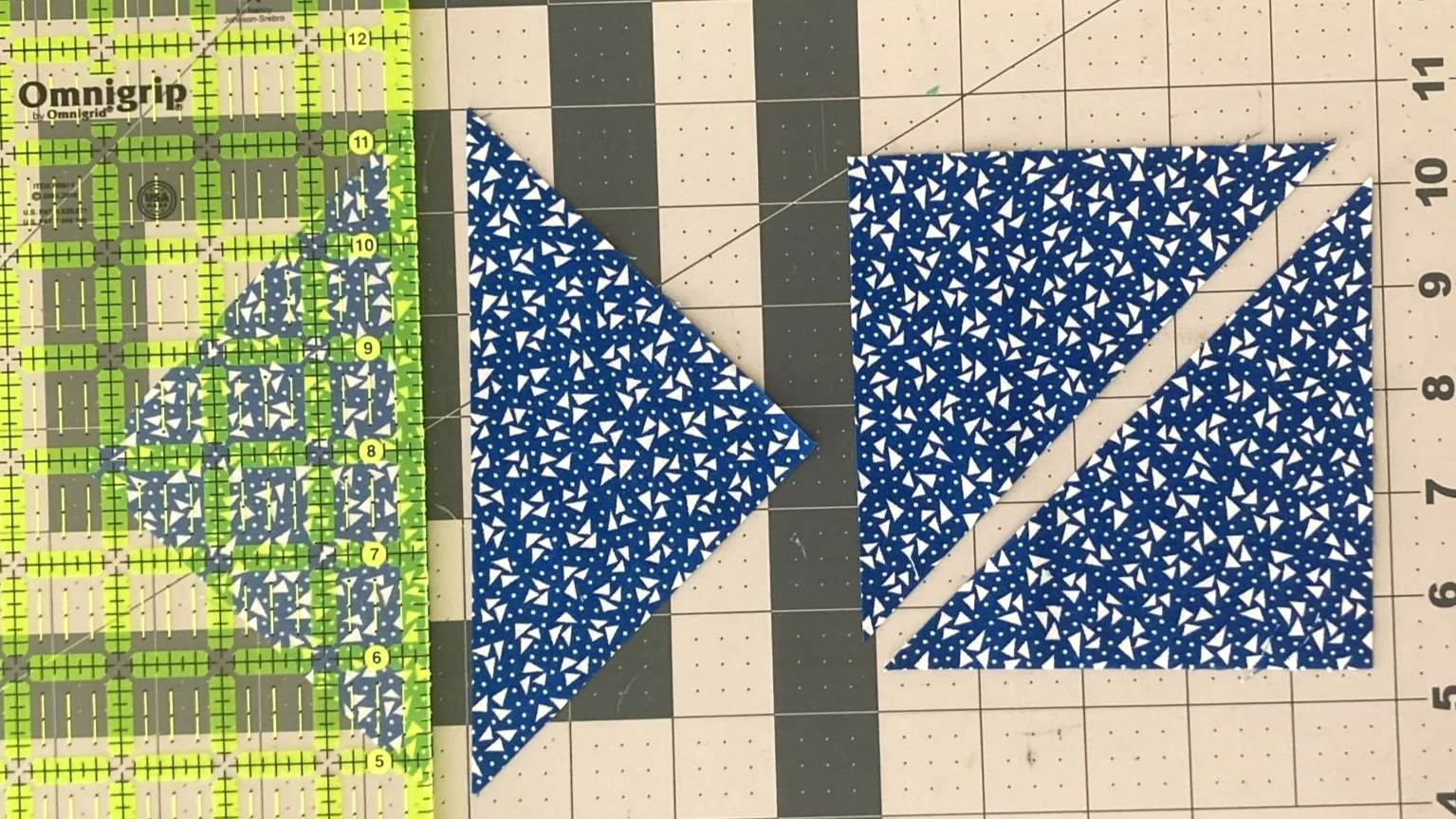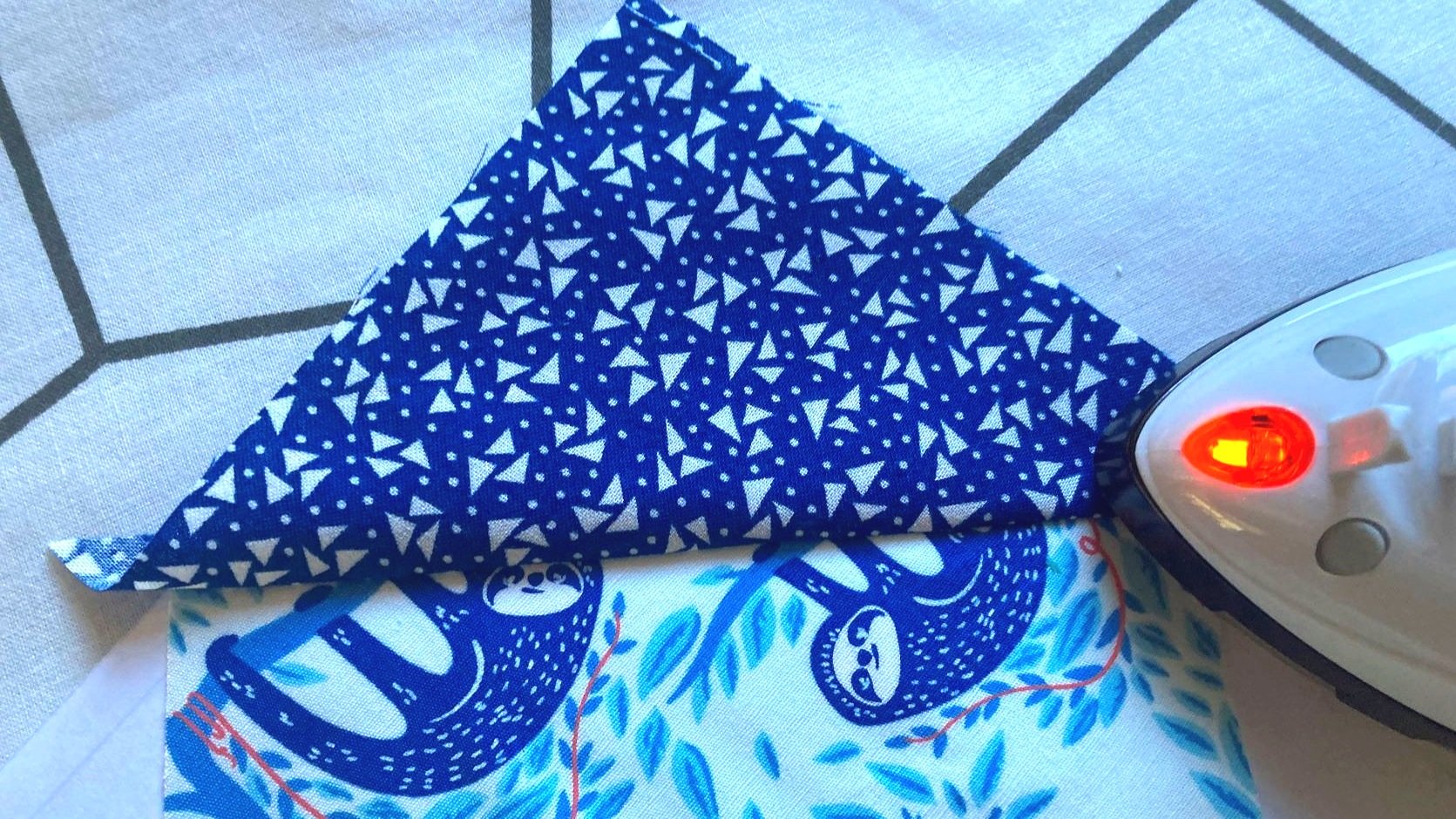Cosmic Cactus Quilt Along PART 5: Make Square-in-a-square block
I hope you are enjoying the leisurely pace of the quilt along! If you’ve never tried paper piecing, making these square-in-a-square blocks are a great introduction.
This in-depth tutorial provides paper piecing essentials, step-by-step instructions and plenty of photos to guide you through the process of completing a Square-in-square block for your Cosmic Cactus quilt.
What is paper piecing? Paper piecing is usually done with paper that can be removed after stitching.
Why do I prefer to paper piece the square-in-a-square block? There are other methods for making this block, but I prefer paper piecing because:
Only a small amount of wastage. Other methods waste more fabric!
Greater accuracy when piecing the block.
REMINDERS
QUICK LINKS (click to skip ahead)
TOOLS REQUIRED
Omnigrip square quilt ruler - Consider a 7.5 inch square for the Baby size quilt; 9.5 inch square for the Throw size quilt. Look for value packs of two or more rulers!
Pins, fabric marker, Scotch Magic Tape (if joining your templates) and water-soluble glue stick.
PAPER PIECING ESSENTIALS
When cutting your fabric use the labels that are included in the pattern, as the two different size squares will look similar in size.
Handle the 2 smaller squares with care. When cut in half they will have bias edges. Take particular care when pressing. Press your seam by lift and lowering the iron in one spot. Do not iron back and forth as this will cause distortion and stretching along the bias edge.
You can use regular printer paper!
When printing your templates, ensure you print at 100% size. Don’t select ‘scale to page’ when printing. Check the printed template is the correct size measuring the 1 inch scale box.
Place your fabric square on the non-printed side of the paper.
Place your fabric square on the non-printed side of the paper, with the right side of the fabric facing towards you.
Use a glue stick (water-soluble) to hold main centre square in place (but don't use too much) and pins for the outer triangles.
Shorten your stitch length to 1 to 1.3. This will allow the paper to tear off easily.
Sew directly through the printed paper from the printed side (fabric will be on the underside).
PRINT THE TEMPLATES
1. Print the templates at 100% size (do not scale to page).
2. Check the printed template is the correct size by measuring the 1" scale box and checking the finished size of the block is correct.
PREPARE THE TEMPLATE
JOINING TEMPLATES (Throw size only)
1. When cutting out the larger template (as pictured), cut along the dotted line that runs along the edge of the page.
2. Take the remaining smaller half of the template and cut around the template to join the two pages.
3. Line up the template block and use tape to secure the pages together.
Tip: I prefer to use Scotch Magic Tape as you can unstick tape and make minor adjustments if you didn’t link up properly!
CUTTING TEMPLATE (Baby and Throw sizes)
4. For accurate cutting, use a rotary cutter, ruler and line up the inner 1/4 inch solid line.
Template is ready for piecing!
BEFORE YOUR START PIECING
1. Make a test block: If you are new to paper piecing, try making a test block with scrap fabric and check you can successfully complete the block before proceeding. If you’ve gone wrong somewhere, review my tips or ask our community of quilters by joining our Facebook group.
2. Sort your fabric squares, pairing 1 large square and 2 smaller squares, following the Square-in-a-square Guides in the pattern. Scrappy quilters (option 3) may also refer to the Block Placement Guide for their fabric pairs.
PIECING THE BLOCK
1. Take the 2 smaller squares and cut in half diagonally, taking care not to stretch the bias edges.
2. Take template, 1 large square and water-soluble glue stick.
Place the paper template printed side down. Position the square right side up on the A1 centre square.
Hold the template up to the light (or use a light box) to help position the square and ensure the edges overlap on all four sides.
Use a dot of the glue stick in a few places to secure the fabric square.
Tip: For fussy cut square placement check the motif fits within the lines of inner square as desired. Try the method below for lining up and centring the motif.
Mark the centre point on your paper template and fabric square.
Place pin through the marked centre point of your fabric square.
Then place pin through the marked centre point on your template.
3. Take 2 triangles and with right sides together (RST) place on top of the centre square, opposite the A2 and A3 spaces, matching the raw edges.
Pin in place. I recommend pinning on the bottom side of the template as shown in the photo, positioning the pin heads towards the centre of the square. This allows enough room for sewing along the printed line and you can leave the pins in place while sewing, then remove them after.
4. Change your stitch length to 1 to 1.3 before sewing.
5. Turn the paper over and stitch on the printed side of the paper on the inner solid line next to the A2 and A3 spaces, starting your first stitch at the inner square point. Back stitching at the start and finish.
Tip: Ensure the triangle underneath is sitting flat and doesn’t fold over before sewing (don’t ask how I know).
6. From the right side of the template, fold over the A2 and A3 paper corners along the sewn seam and trim the seam allowance to 1/4 inch.
7. Press your seams.
8. Repeat steps 3-7 for the remaining A4 and A5 corners, except start and finish stitching from the edge of your template along the dotted line.
Take 2 triangles and with RST place on top the centre square, opposite the A4 and A5 spaces, matching the raw edges.
Start and finish stitching from the edge of your template along the dotted line.
Stitching on right side of template for the A4 and A5 corners.
Blocked is ready to be trimmed!
9. Turn over to the printed side. With a rotary cutter and ruler trim around the outer square along the dotted line.
Turn over to the printed side. With a rotary cutter and ruler trim around the outer square along the dotted line.
Tip: For best trimming accuracy, line up you ruler with the inner sold line and trim off 1/4 inch.
10. Removing paper: Here comes the fun part! Carefully tear the paper away from the stitching. As you’ve done small stitches, the paper should easily tear away. Ensure you carefully remove the paper without stretching the fabric.
Voila! You have completed a perfect Square in a square block.
How did you go making your Square-in-a-square blocks? I find these to be a fun block to make and I love the accuracy you achieve with paper piecing these blocks.
If you have any further questions or need a little help completing your blocks, please ask our community of quilters by joining our Facebook group.
The only entry for this week was by @susanmarkhamvirtualassistant and she has already won a copy of the Cosmic Cactus Quilt Pattern! So no prize has been awarded this week.
Now that you have made your Square-in-a-square blocks, you are ready to move onto Part 6: Assemble Blocks.

